Since the Software-as-a-Service sector came into the scene somewhere around 2005, it has undergone growth that can be described as exponential. Huge amounts of time and money are currently being invested in SaaS businesses and projects, which have a significant possibility of succeeding provided they are able to fulfill the requirements of the market.
Instead of paying a one-time price to use the software, users and other customers can pay a yearly or monthly subscription to utilize the SaaS software. This is made possible by the SaaS business model. This type of pricing model enables startups and other companies in the software as a service (SaaS) industry to generate recurring monthly revenue while looking for fresh features, new products, improved service, and other perks that offer lifetime value to both new subscribers and existing users. This type of pricing model is made possible by cloud computing, which allows the software to be delivered online.
However, subscription payments on a monthly basis and cloud services are only two aspects of the SaaS business model. Whether you are just thinking about developing software as a service (SaaS) product or you currently own one, it is essential to understand that there is much more to this quickly evolving business than merely selling subscriptions.
There is no denying that subscription-based income continues to be the cornerstone of the majority of business models for SaaS companies; nevertheless, there are other inventive approaches to the pricing strategy for SaaS, as well as novel strategies to expand the client base and enhance cash flow. In addition, SaaS businesses may boost their income by selling additional services and charging higher prices for continuing support and premium onboarding.
Read also: A detailed guide on UCD Methodologies and Principles
In this essay, we will discuss the perks and drawbacks of working for a software as a service (SaaS) company, as well as describe the SaaS business model. In addition to that, we will explain how to maximize the income streams generated by your SaaS offering and demonstrate the entire approach with three different case studies.
Additional reading: How to Build Customized Software for Your Business?
What is the SaaS Business Model?
Providing software installed on your cloud as a subscription to users to make recurring money is known as the SaaS business model. Users access the program, which is hosted in the cloud, generally through mobile apps or web apps, but desktop access is also an option. Almost every company and the vast majority of customers today utilize software as a service.
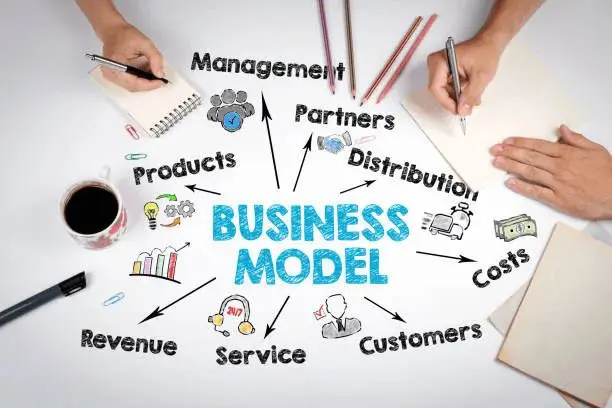
Software-as-a-service (SaaS) is offered by a variety of well-known B2B software firms, including those whose primary focus is communications (like Discord, Slack, and Zoom) and others whose primary product is customer relationship management (CRM) platforms (like Salesforce). Personal finance management applications such as EveryDollar are examples of consumer SaaS solutions. Of course, some individual customers prefer B2B platforms.
It is absolutely not impossible to construct a successful business providing software as a service (SaaS) to consumers, but it is much more challenging to produce value that is sustainable in this market. This is due to the fact that the vast majority of customers anticipate that applications would either be incredibly cheap or completely free.
On the other hand, software as a service (SaaS) companies that meaningfully address pain issues in the B2B sector is able to expand consistently and quickly to big values.
How Does SaaS Model Work?
We are drawing a distinction here between the SaaS model and the others because the SaaS model has a number of characteristics that are unique to it. Some of these characteristics are as follows:
1) Regular Payments
Customers of a SaaS model do not need to purchase hardware. Because the software-as-a-service (SaaS) model of business and pricing entails the provision of a subscription to use the application, you will be required to be concerned with the payment of the year or monthly subscription rather than paying the fee just once.

Monthly recurring revenue, often known as MRR, is the income that is generated by regular payments made on a monthly basis. It can be challenging to accurately account for income in SaaS businesses because these businesses provide services rather than products. When a consumer signs a contract and subscribes to your service, you may get some cash in advance; yet, you cannot consider this cash to be revenue until you have really earned it. Up until that moment, it is a liability, which means that the money belongs to the client and they have the right to ask for it back at any time if you don’t supply the service.
As a direct consequence of this, the process of revenue recognition is an essential component of the SaaS business model.
2) Regular Updates
SaaS continually offers smaller and more regular improvements to their services in order to keep end-users happy and have greater customer lifetime value. This is in contrast to other products, which may come out with “next-gen” product versions at some point in the future.

System failures can put customer data at risk from hackers, continuously assessing the condition of security updates is a primary concern in the SaaS model. This is partly because of being in the software business. Because they host their own products, SaaS organizations have the ability to send updates whenever it is necessary. These updates might include the release of new features, improved versions of existing features, and new product upgrades. SaaS organizations may be particularly sensitive to the requirements and comments of their client base if they combine this with effective communication with their clientele.
3) Increased Customer Retention
When it comes to SaaS revenue models, client retention is ten times more crucial than it is for other types of businesses. This is due to the fact that the turnover of paying users is the only factor that can keep you afloat. Because, as we discussed earlier, you can’t lay claim to all of your customers’ subscription money until you’ve delivered a full term of service, this means that if you sign people up for 12 months and they leave after 2, then you won’t be able to claim the other 10 months of cash flow.
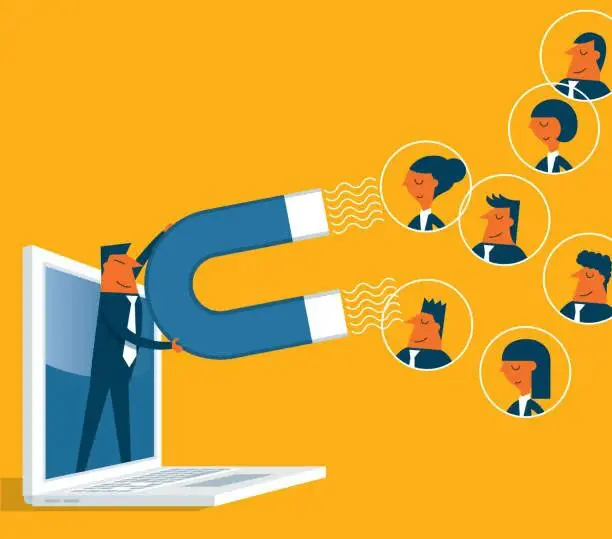
Because of this, the SaaS business model places a significant emphasis on developing strong connections with existing customers and upselling. An existing customer of a SaaS company spends, on average, more money than a new customer does, and they are more likely to leave your business due to poor customer support than they are to go to a contender for a superior product. In other words, existing customers spend more money overall.
Stages of SaaS Business Model
As we are about to discover, extremely successful software as a service (SaaS) enterprises may claim values in the hundreds of millions of dollars, serve a tremendous number of clients, and radically revolutionize the way that whole sectors think about certain areas of their company. On the other hand, this is the ultimate step of the SaaS business model and the one that is the most successful.
The life of a software as a service (SaaS) company may, in a sense, be divided into three distinct phases.
Read also: What Is an Enterprise Application? A Complete Guide.
1) Early-stage
This involves getting everything up and running, creating a product that is functional, and “coming to market” with it in order to acquire your initial few clients.
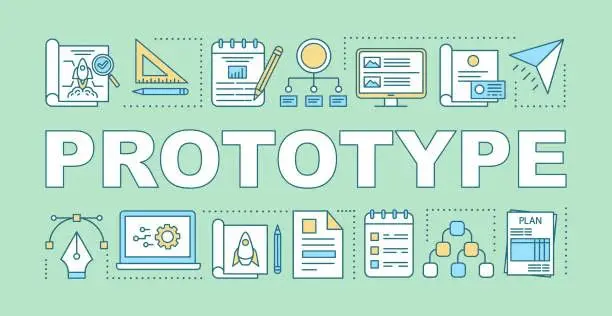
In the early stages of your software as a service (SaaS) firm, you, as the owner of the company or the entrepreneur, are still only performing the most fundamental tasks. It is quite improbable that you will have a large number of consumers, and the product will most likely be in its early stages of development. Either you are in the process of applying for your first round of pre-seed investment or you have made the decision to pursue the bootstrapping strategy in order to keep a tighter rein on your business’s day-to-day operations.
Additional reading: A Comprehensive Guide to Software Development Environment
During the beginning stages of your company’s development, you will likely still have a limited number of employees, you will almost certainly be concentrating your efforts on a single product, and you may not yet have begun to generate a significant amount of revenue.
At this point, the following are the most important questions you should really be asking yourself: Am I keeping track of stats, on the lookout for new consumers, and trying to find the optimal pricing? Have I started establishing my own unique business model, which will make it possible for me to seek out the appropriate sort of capital and use it effectively?
2) Hypergrowth Stage
When we reach the growth stage, that’s when things really start to pick up. You have created something that is rapidly expanding, your product is attracting new customers, and you are beginning to generate recurring revenue (MRR) and potentially even positive cash flow.

In order to get your growth stage off the ground and to keep pushing through it, you are going to need to get serious about generating capital for your business. These funds will enable your firm to expand its workforce, invest in product design and development and refinement, and scale.
There are other ways to build your company besides seeking investment from venture capitalists and angel investors. Some organizations go through the process of using an incubator when they are in their very first days of operation, while other, somewhat more established Businesses locate startup accelerators that match their needs and utilize them for a different sort of funding experience. Some businesses are able to sustain themselves using internal resources for considerably longer periods of time than others, while others are so successful at generating money from the very beginning that they don’t discover the need for outside investment until much later.
At this point, you need to be questioning yourself: Have I formulated key performance indicators, often known as KPIs, to guarantee that I am ready for further scaling? Have I developed a solid plan for monetizing my business in preparation for the day when I may decide to look for some kind of investment?
3) Maturity Stage
Software as a service (SaaS) firm that has reached maturity is now stable and has demonstrated its competence and may be regarded as established. A firm that has reached the mature stage of its development has identified its target demographic, to whom it caters, and has developed a dependable product, which it continues to improve.
The company’s monthly recurring revenue (MRR) is doing well, and all of the other major KPIs are holding steady (more will be said on these in the future). Companies that have reached the mature stage of their development may still seek and accept investment, but the amount will be significantly greater and will be used to break into emerging markets or buy out competitors.
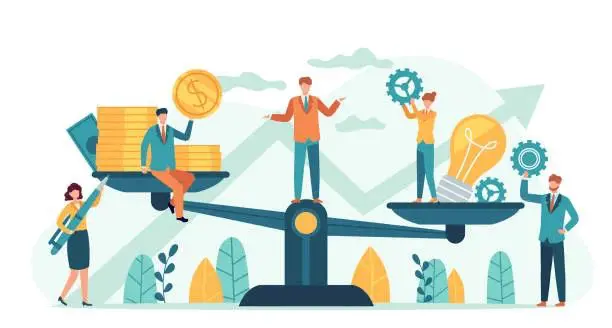
When was the last time that we examined our pricing strategies? That is the most important question that a SaaS startup should consider at this stage. When software as a service (SaaS) company reaches its mature stage, it is common for executives to develop a sense of confidence and begin to believe that their company is operating at its full capacity since it is consistently profitable. In point of fact, mature-stage SaaS firms frequently find themselves in a position where they are sitting on a mountain of potential money that they are throwing away as a result of bad pricing decisions.
What is the SaaS revenue Model?
In exchange for the usage of a software program or some other tool, the SaaS revenue model requires users to make consistent, recurring payments over the course of a certain amount of time.

1) Relevant Companies/Products
In the ICT sector, SaaS most often manifests as web-hosted software applications. Other subscription-based businesses include media distribution, mobile phone carrier service, and bank account management. The SaaS/subscription model is also used for per-seat or tiered pricing of medical equipment and devices.
2) SaaS/Subscription Marketing Concerns
The goal of marketing strategies is to increase the number of subscribers by engaging in activities such as lead generation, branding, and acts of goodwill, as well as making other attempts to generate interest in the product.
3) Strategic Financial Impact
The majority of the time, prosperous software as a service (SaaS) and subscription businesses construct their customer bases over an extended period of time. During this interim period, they are in need of financial help in order to enhance delivery capacity and support attempts to expand the user base.
4) Relationships with Customers
The continual supply of value to customers is at the heart of the subscription-based software as a service (SaaS) business model.
5) SaaS/subscription Revenue Concerns
Companies that use the software as a service (SaaS) or subscription financial model should concentrate their efforts largely on providing cost-effective value to their customers.
6) Methods
Although it is more customary to think of SaaS and subscriptions as individual sales to subscribers, the SaaS and subscription model may also be used for bulk sales of a product or service. A corporation can offer subscriptions in bigger increments for a discounted price per user if they choose to do so rather than selling a single membership to a single subscriber.
7) Key Metrics
Companies that provide SaaS or subscription services view customer loyalty and net new subscriber growth as two of the most important indicators.
8) SaaS/Subscription Costs and Advantages
SaaS/subscription revenue models perform well when serving ongoing consumer demands. Customer connections may last years. Novel enterprises sometimes struggle to entice new clients to sign long-term commitments.
How to Optimize Your SaaS Revenue
By maximizing the performance of your SaaS business model, you may achieve hypergrowth in primarily two ways:
- Reduce your client acquisition cost, often known as CAC, and make it easier to create new consumers; alternatively
- Raise your customers’ entire lifetime total value (LTV) to boost your overall customer retention.
Let’s investigate some different tactics for each of them.

1) Reduce the CAC
To cut down on your overall customer acquisition costs, prioritize securing the ideal clients at the most favorable prices (CAC). This may mean using various marketing channels, targeting customers in a more particular manner, or possibly going for a somewhat different demographic of customers.
You may bring down your CAC in a number of different methods, including the following:
- Establish or get rid of a complementary pricing scheme.
- Change the prerequisite of providing a credit card number before a free trial.
- Target businesses ranging in size from small to large.
- Concentrate on a distinct market segment within the same industry.
- Make use of advertising and social networks that are not commonly seen in the niche.
- Develop a content marketing strategy that is interesting, of high caliber, and beneficial.
- With a low-cost “side project,” you can generate viral growth.
Keep in mind that reducing CAC may require going beyond enhancing targeting tactics and instead increasing or revising target audiences in order to get the desired results.
2) Boost your LTV
Increasing the Lifetime Total Value (LTV) of every client is another fantastic strategy for optimizing the business model you use for your SaaS offering. There are several different approaches that may be taken to raise the LTV of a SaaS:
- Enhance the user onboarding process by providing improved information, manuals, videos, webinars, emails, and other forms of communication;
- Optimize the pricing of your products so that you may strategically upsell to larger accounts; for instance, you might create value-added higher-priced levels.
- Improve the user experience through an in-depth study of SaaS data and key performance indicators;
- Provide professional services like as training for teams, bookkeeping, administration of marketing, and other general or individualized offerings;
- Conduct research on customer retention and evaluate data on product usage to identify the primary causes of customer churn and develop strategies to address those causes;
- Bonding may be added to a product by including new features, such as a high-value API, which decreases the churn rate while simultaneously increasing the number of users and income.
Advantages and Disadvantages of the SaaS Business Model

Advantages
1) With SaaS, expansion is simple.
Companies must handle vast volumes of data quickly to deliver real-time information. SaaS systems may be scaled to manage large data transaction volumes and increased activity, like payroll systems or month-end closings. This enables current reporting and informed decision-making.
SaaS scalability goes beyond data processing. SaaS vendors offer many subscription packages to fulfill user demands, and customers may choose between them on the fly. Cloud-based software allows teams in multiple places to use the same solution.
2) The capacity to control software updates
As SaaS is on the cloud, the provider handles updates. All software versions and monthly incremental upgrades are included in the subscription fee. Contrast this with the costly on-premise software upgrades, which require a consultant and less frequent updates.
3) Infrastructures deployed in the cloud
SaaS companies install software on the cloud and allow end users membership by using their account online credentials. A browser and the internet are required. There’s no need for on-site software installation, expensive equipment, or an end-user license to activate the product.
4) Stable, regular income
When your product is fundamental to a business’s functioning, you’ll acquire loyal clients and realize monthly subscription income. This is more predictable than one-off sales. Long-term customers are less likely to cancel, resulting to a more dependable revenue stream.
5) Flexible licensing
SaaS is more adaptable to client demands than hosted software. SaaS offers monthly and annual subscriptions with as-needed lengths. Unlike hosted software, no licensing or installation is required.
Disadvantages
1) Simple business models that can be replicated
When a SaaS firm succeeds, imitators, follow. If a company’s SaaS marketing, sales, price structure, or email marketing is effective, competitors may easily imitate it by searching online. Customers and rivals get pricing transparency.
2) Extended conversion funnel
In the SaaS business strategy, converting new customers into paying users normally takes many months, including free trials and signups. You’ll spend more time developing leads and customers.
3) Reduced entrance barriers increase competition
Easy SaaS connection means easy substitution and lowers competitive barriers. Most SaaS transactions are subscription-based, therefore you must deliver greater value above rivals while upselling to the next subscription level. If a consumer is unhappy with services or assistance, they can switch to a rival with a comparable price structure without making a huge upfront commitment.
4) Security
SaaS products aren’t immune to cloud-based dangers and data loss. Subscribers and suppliers should trust third-party providers with mission-critical data. Understanding the software provider’s limits on data confidentiality and integrity might be crucial.
5) Complex analytics
SaaS marketing and data analytics are increasingly difficult since data comes from all angles. Bay Leaf Digital’s Abhi Jadhav says
Challenges Faced by SaaS Companies
Here are six common SaaS challenges that SaaS companies experience:

- Price increases are brought on by inflation and increasing expenditures for product development.
- The ongoing commercialization of software as a service.
- Consolidation of the market among the major companies.
- A decrease in consumers’ willingness to pay for things that need payment.
- Attempt to move toward usage-based pricing and reengineering of monetization.
- A management strategy for hybrid work and distributed teams.
SaaS Growth Strategies
Growing a SaaS firm has several paths. The development strategies you pick rely on your core capabilities and prior successes. Here are some ways to expand your SaaS firm.
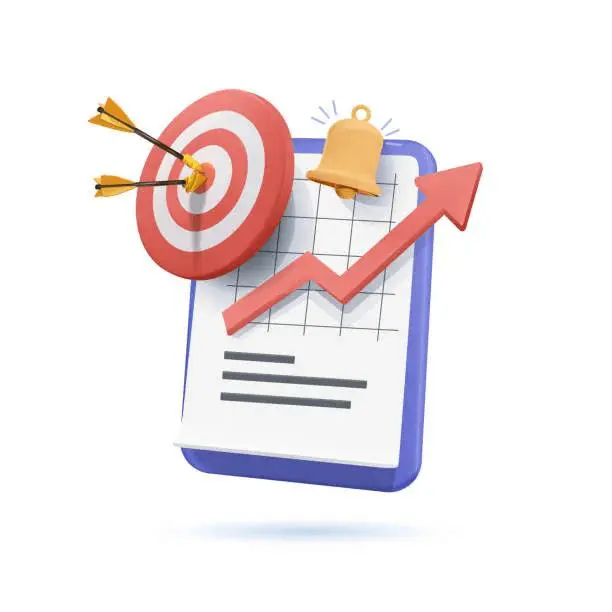
1- Boost Organic Traffic
Organic traffic has the best conversion. Using Seo tools, you can monitor where you rank to improve your organic search.
2- Include Product Upsells
This option serves existing clients better and earns you more. Higher-end upsells may provide greater features, perks, storage systems, or all of the above. It might be a one-time offer, like a webinar on how to utilize the programme. This is the “freemium” pricing strategy, where users become acclimated to your goods for free and subsequently pay.
Always analyze the costs of giving an upsell so you can incorporate them into the ultimate price your clients pay.
3- Launch New Marketing Channels
Set traction targets before testing a new tactic. Spend enough in the new channel to establish statistical significance. Otherwise, investment is pointless.
Converting your highest organic ranking or most popular content into a Video as a new marketing channel.
4- Include an Affiliate Program
Your firm will benefit from an affiliate program. Especially if your program is successful and can attract experienced affiliates.
If you want to recruit affiliates, give residual money. In SaaS, this is more enticing than a one-time payment.
If you know your CAC and LTV statistics, you may make a big, advance, one-time fee to the affiliate, understanding that the average consumer will remain long enough to repay the expenditures.
Since their marketing efforts have razor-thin margins, some affiliates embrace this.
An affiliate programme may boost your marketing while reducing your workload.
5- Lean and Fast
Minimize faulty code to enhance customer happiness and loyalty (and reduce infrastructure expenses). Bad or inefficient code can slow down your program, reducing user satisfaction
Profitable, lean, and mean.
Hire Hapy For SaaS Development

Conventional software losing popularity that had to be installed on personal hardware. It’s time to grow with the world and shift towards SaaS development. If you want to earn from a software business, you need the SaaS business model or you will have no revenue model in the future at all!
That’s why you should avail the of development and design services from the Industry leaders like Hapy have a lot of experience in the design and development of SaaS software. We can make your vision a reality with a great SaaS product that will help you make a mark in the Business world.
Want to convert your idea into a great revenue-generating Saas? We just have the right solutions for you at Hapy.
Final Thoughts
The number of possible uses for software as a service (SaaS) is almost without bounds, and the fact that there are ever more ways to raise money indicates that now is the best moment ever to get involved in this industry.
However, the most successful SaaS organizations attribute their achievements to their adherence to a few basics in the SaaS business model. These foundations include dependence on accurate data as well as the utilization of the appropriate tools and solutions. If you run your company according to the same ideas, you will realize that your company is working towards a common goal.
FAQs
What is a SaaS business model?
The software is often accessible via a web or mobile application, but it is sometimes accessed via a desktop app. The SaaS business model refers to the practice of selling cloud-based software for a recurring monthly or yearly price. SaaS, which is an abbreviation for “software as a service,” is currently utilized by virtually all commercial enterprises and the vast majority of individual customers.
What is the SaaS revenue model?
In exchange for the usage of a software program or some other tool, the business model known as software as a service, or SaaS, requires users to make consistent, recurring payments over the course of a certain amount of time.
What makes a company SaaS?
An organization that hosts the software and makes it accessible to consumers through the internet is known as a software as a service (SaaS) company. The acronym “SaaS” refers to “Software as a Service.” This suggests that the program is hosted on the server of a SaaS provider, while the user logs in to it from a remote location.
What is a B2B SaaS business model?
The abbreviation “B2B SaaS” refers to “Software-as-a-Service for Business to Business.” It comprises software that is hosted in the cloud and utilized by businesses for a variety of purposes, including CRM, accountancy, office efficiency, and other endeavors that are connected to work.



